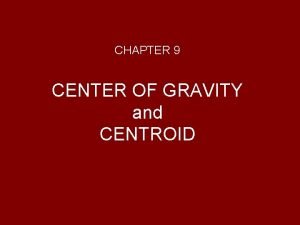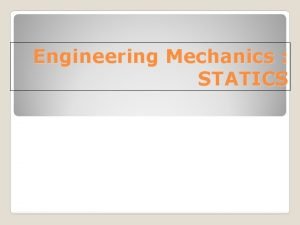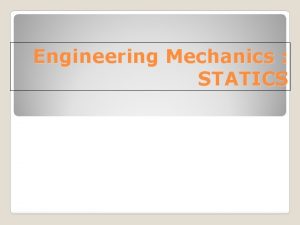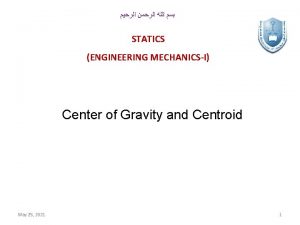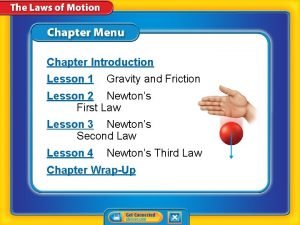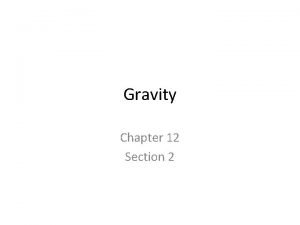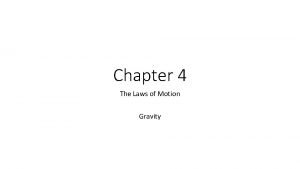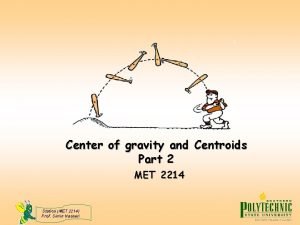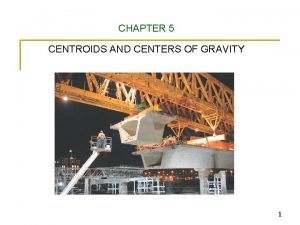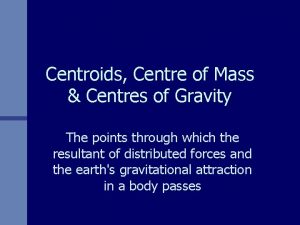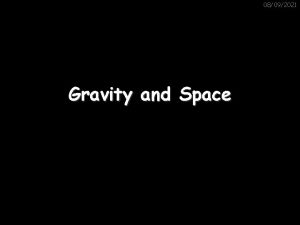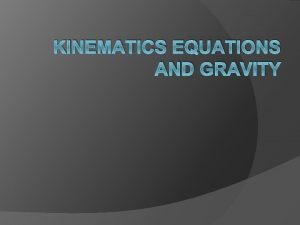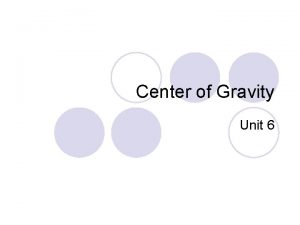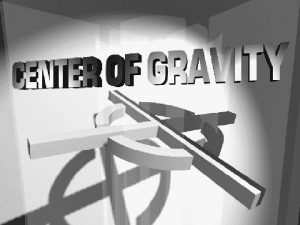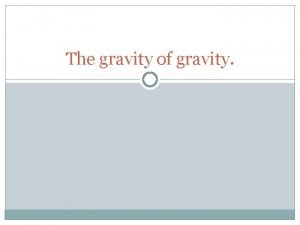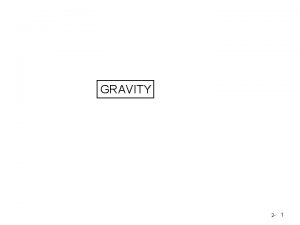Chapter 2 Centroids and the center of gravity





















- Slides: 21

Chapter 2 Centroids and the center of gravity

Centroids The centroid of an area is situated at its geometrical centre. In each of the following figures ‘G’ represents the centroid, and if each area was suspended from this point it would balance.

Center of gravity The centre of gravity of a body is: • The point at which all the mass of the body may be assumed to be concentrated. • The point through which the force of gravity is considered to act vertically downwards, with a force equal to the weight of the body. • The point about which the body would balance. The centre of gravity of a homogeneous body is at its geometrical centre.

Consider a homo. Block of wood, its center of gravity will be its geometrical center, • half way of its length, • half way of its breadth, and • half way of its depth Place a wedge under its C. G, the block will balance G W

Effect of removing or discharging mass G W d w Moment = w x d G W G 1 W- w G And also moment = (W- w) x GG 1 w x d =( W –w) x GG 1

Moment = w x d & Moment = (W-w) x GG 1 w x d = (W-w) x GG 1 Therefore GG 1 = w x d W-w Where, GG 1 is the shift of the C. G of the body w d is the mass removed is the distance between the c. g of the mass removed and the C. G of the body (W –w) is the final mass

Application to a ship Discharging GG 1 = w x d W-w

CONCLUSION Effect of removing or discharging mass When a mass is removed from a body, the center of gravity of the body will move directly away from the center of gravity of the mass removed


Application to a ship Loading GG 1 = w x d W+w

CONCLUSION Effect of adding or loading mass When a mass is added to a body, the center of gravity of the body will move directly towards the center of gravity of the mass added

Application to a ship shifting weights GG 1 = w x d W

CONCLUSION Effect of shifting weights The centre of gravity of the body will always move parallel to the shift of the centre of gravity of any weight moved within the body.

Application to a ship shifting weights

Application to a ship shifting weights

Application to a ship shifting weights

Effect of suspended weights the centre of gravity of a suspended weight is considered to be at the point of suspension.

Effect of suspended weights

Conclusions 1. The centre of gravity of a body will move directly towards the centre of gravity of any weight added. 2. The centre of gravity of a body will move directly away from the centre of gravity of any weight removed. 3. The centre of gravity of a body will move parallel to the shift of the centre of gravity of any weight moved within the body. 4. No matter where the weight ‘w’ was initially in the ship relative to G, when this weight is moved downwards in the ship, then the ship’s overall G will also be moved downwards to a lower position. Consequently, the ship’s stability will be improved.

5. No matter where the weight ‘w’ was initially in the ship relative to G, when this weight is moved upwards in the ship, then the ship’s overall G will also be moved upwards to a higher position. Consequently, the ship’s stability will be decreased. 6. The shift of the centre of gravity of the body in each case is given by the formula: where w is the mass of the weight added, removed or shifted, W is the final mass of the body, and d is, in 1 and 2, the distance between the centres of gravity, and in 3, the distance through which the weight is shifted. 7. When a weight is suspended its centre of gravity is considered to be at the point of suspension.

 Centre of gravity of various shapes
Centre of gravity of various shapes Centroids and centers of gravity
Centroids and centers of gravity Gravity for dummies and dummies for gravity equations
Gravity for dummies and dummies for gravity equations Statics center
Statics center Centroid formula statics
Centroid formula statics Centroid and centre of gravity in engineering mechanics
Centroid and centre of gravity in engineering mechanics Centre of gravity in gymnastics
Centre of gravity in gymnastics Pertanyaan tentang penentuan lokasi industri
Pertanyaan tentang penentuan lokasi industri Center of gravity method facility location example
Center of gravity method facility location example Rumus mencari lokasi strategis
Rumus mencari lokasi strategis Center of gravity method operations management
Center of gravity method operations management Statics centroid
Statics centroid Problems on centroid in engineering mechanics
Problems on centroid in engineering mechanics Jandaka
Jandaka Friction can act between two unmoving, touching surfaces.
Friction can act between two unmoving, touching surfaces. Chapter 12 section 2 gravity answer key
Chapter 12 section 2 gravity answer key Gravity chapter 4
Gravity chapter 4 Gravity chapter 2
Gravity chapter 2 Chapter 20:11 using reagent strips to test urine
Chapter 20:11 using reagent strips to test urine Hình ảnh bộ gõ cơ thể búng tay
Hình ảnh bộ gõ cơ thể búng tay Ng-html
Ng-html Bổ thể
Bổ thể

